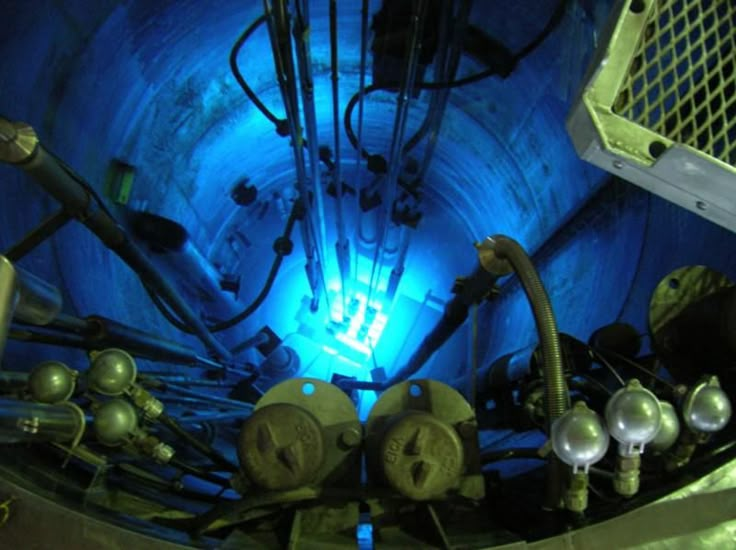The Engineering Behind Nuclear Reactors: Design, Safety, and Future Innovations
The Engineering Marvels of Nuclear Reactors: A
Comprehensive Guide
Discover the cutting-edge world of
nuclear reactor engineering, a field where physics, material science, and
innovative design converge to power our modern society. This guide explores the
core engineering principles that drive reactor technology, from the science
behind controlled nuclear fission to advanced safety systems and future trends
in nuclear energy.
Understanding the Science Behind Nuclear Reactors
Nuclear reactors harness energy from
atomic fission in a controlled manner. At their core, reactors use fissionable
materials like uranium or plutonium, which split when hit by neutrons. This
reaction releases tremendous energy and additional neutrons, sustaining a chain
reaction. Key points include:
- Neutron Economy:
Optimizing the balance between neutron production and absorption is
critical. Efficient reactor designs maximize neutrons for sustaining the
reaction while minimizing losses.
- Neutron Moderation:
Reactors can operate with fast or thermal neutrons. Thermal reactors use
moderators such as water or graphite to slow down neutrons, whereas fast
reactors maintain high-energy neutrons to breed fuel and reduce waste.
Core
and Fuel Assembly Design
The reactor core is where the magic
happens, and its design is crucial for both efficiency and safety. Engineers
meticulously plan the layout of fuel assemblies—bundles of fuel rods—to ensure
an even and sustainable chain reaction. Considerations include:
- Fuel Configuration:
The arrangement of fuel rods is designed to optimize neutron flux and heat
transfer. Different reactor types, like pressurized water reactors (PWRs)
or boiling water reactors (BWRs), have unique fuel assembly designs.
- Thermal Hydraulics:
Efficient removal of heat from the fuel is paramount. This involves
sophisticated cooling methods that manage temperature and phase changes,
ensuring the reactor operates safely.
- Material Durability: High-performance cladding and structural materials are chosen to withstand high temperatures, radiation, and corrosive environments. Advanced alloys and ceramics play a key role in extending reactor life.
Innovative
Cooling Systems for Optimal Heat Removal
Removing heat from the reactor core
is essential to prevent overheating and maintain safety. Reactor cooling
systems vary by design:
- Water-Based Cooling:
Most reactors, including PWRs and BWRs, use water both as a coolant and
moderator. PWRs operate under high pressure to prevent boiling, while BWRs
let water boil and use the resulting steam for power generation.
- Alternative Coolants:
Emerging reactor designs explore coolants like molten salts and lead-based
alloys. These materials offer high thermal conductivity, low operating
pressure, and unique benefits in fast reactor designs.
Safety
Systems: Merging Passive and Active Engineering
Safety is the cornerstone of nuclear
reactor design. Modern reactors incorporate multiple layers of safety through
both passive and active systems:
- Passive Safety Features: Relying on natural forces such as gravity and
convection, passive systems can cool the reactor without external power.
For instance, gravity-fed cooling tanks can maintain safe temperatures
during emergencies.
- Active Safety Mechanisms: These include automated control rod systems that
adjust reactor reactivity and emergency core cooling systems (ECCS) that
inject coolant when needed. Redundancy in these systems ensures
reliability even if one component fails.
- Robust Containment Structures: Heavy-duty containment buildings made from reinforced
concrete and steel provide the final barrier against any accidental
release of radioactivity.
Advanced
Instrumentation and Control Systems
Precision in controlling the reactor
is vital. State-of-the-art instrumentation and digital control systems monitor
every aspect of reactor operation:
- Control Rod Management: Computerized systems enable precise insertion and withdrawal
of control rods, which are essential for regulating reactor power.
- Real-Time Monitoring:
Sensors and automated data analytics continuously track parameters such as
temperature, pressure, and neutron flux, allowing for proactive
adjustments.
- Predictive Maintenance: Advanced diagnostics help anticipate potential issues,
reducing downtime and enhancing overall reactor performance.
The
Nuclear Fuel Cycle and Materials Innovations
The entire lifecycle of nuclear fuel—from
mining and enrichment to disposal and reprocessing—is a critical component of
reactor engineering:
- Fuel Enrichment and Fabrication: Tailored fuel compositions are designed for optimal
fission performance and minimal waste generation.
- Reprocessing Technologies: For reactors that breed fuel or recycle waste,
innovative chemical processing methods recover usable materials from spent
fuel.
- Materials Engineering: Ongoing research into advanced alloys and ceramics is
key to improving component durability in harsh reactor environments.
For More Resource Link: https://www.iaea.org/topics
Future
Trends in Reactor Engineering
The next generation of nuclear
reactors is being shaped by ambitious research and international collaboration:
- Generation IV Reactors: Designs such as molten salt reactors, lead-cooled fast
reactors, and small modular reactors (SMRs) promise higher efficiency,
improved safety, and reduced waste.
- Digital Transformation: Enhanced digital control systems and simulation tools
are driving more precise reactor management and reducing operational
risks.
- Sustainable Innovations: The integration of passive safety features and
renewable energy systems positions nuclear power as a key player in
achieving a low-carbon future.
Conclusion
The engineering behind nuclear
reactors is a blend of advanced physics, meticulous design, and relentless
innovation. From optimizing the chain reaction in the core to ensuring robust
safety systems and effective heat removal, every aspect of reactor engineering
is geared toward delivering reliable, clean energy for a sustainable future.
As global energy demands grow and
the push for decarbonization intensifies, nuclear reactor engineering continues
to evolve, paving the way for safer, more efficient, and environmentally
responsible energy solutions.
Stay tuned for more expert insights
into the world of nuclear technology and engineering breakthroughs.









Post a Comment